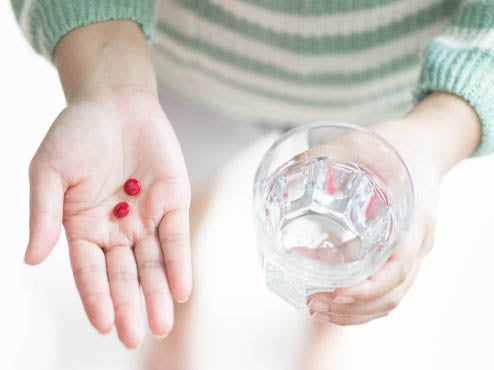Treating anaemia should be easy – so why is it killing women?
Severe cases of iron deficiency can double the risk of death during pregnancy. Research should focus on how to make treatment more effective

Your support helps us to tell the story
From reproductive rights to climate change to Big Tech, The Independent is on the ground when the story is developing. Whether it's investigating the financials of Elon Musk's pro-Trump PAC or producing our latest documentary, 'The A Word', which shines a light on the American women fighting for reproductive rights, we know how important it is to parse out the facts from the messaging.
At such a critical moment in US history, we need reporters on the ground. Your donation allows us to keep sending journalists to speak to both sides of the story.
The Independent is trusted by Americans across the entire political spectrum. And unlike many other quality news outlets, we choose not to lock Americans out of our reporting and analysis with paywalls. We believe quality journalism should be available to everyone, paid for by those who can afford it.
Your support makes all the difference.Iron deficiency is the most common nutritional deficiency in the world, affecting both low and high income countries. Although it is an easy problem to fix, it remains unfixed.
Our bodies need iron to function. Too little leads to anaemia, limiting the body’s ability to carry and deliver oxygen. Well known symptoms of iron deficiency include poor concentration, fatigue and mood changes.
Women are more affected by iron deficiency anaemia than men because they lose iron during their periods and need more when pregnant or breastfeeding. In the UK, one in four women becomes anaemic in pregnancy. In low income countries, it’s one in two.
The consequences of iron deficiency anaemia in pregnancy are alarming. In cases of severe anaemia, our research found that the condition can double the risk of death for the mother. In less severe cases, iron deficiency anaemia can lead to low birth weight, early delivery and poor brain development in babies.
Simple treatment
The treatment for iron deficiency is simple: give iron. Iron tablets are often the first line treatment as they are cheap and readily available.
Many doctors prescribe iron tablets for anaemic women, especially those who are pregnant. Many national and international guidelines suggest that iron should be given prophylactically. In countries where iron deficiency is widespread, iron supplements are given to all pregnant women, irrespective of whether they are anaemic. But still, anaemia persists.
There’s a range of ways to give iron – pills, intravenous drip, fortified water and cooking with iron – but we still don’t know which type is right for different situations. For example, what is the most appropriate type of iron for women who are pregnant versus for women who experience anaemia because of heavy menstrual bleeding? These questions remain unanswered.
Pregnant women and menstruating women are biologically different. These subtleties need attention, not just because they can affect the efficacy of iron treatments, but because side effects and tolerance to treatments can also vary.
There are over 100 published clinical trials of iron interventions both for pregnant women and for women who have just had a baby. Newer preparations of iron are constantly under development. So the question remains: why hasn’t this solved the problem?
Access to care and awareness of the problem is just half the story. It is common for women with heavy periods to endure the effects of anaemia for years before they seek treatment. These women then enter pregnancy already deficient in iron, which only worsens as their pregnancy progresses, putting themselves and their babies under unnecessary risk.
Gaps in our knowledge
While studies have compared iron preparations, it has not been possible to find out which type of iron is the most effective for women with iron deficiency anaemia depending on their stage of life. This gap in our knowledge needs attention.
New statistical methods now allow us to compare all treatments against one another and build a network of comparisons. Such a comprehensive comparison of all available iron treatments will help to provide better guidance on which type of iron works best and for whom. But this alone cannot solve the problem.
Increasing the awareness of the problem among healthcare professionals, women and their friends and family, so that women seek advice and help early, will help to eradicate iron deficiency anaemia, which remains an underrecognised condition affecting women, globally.
Jahnavi Daru is a specialist registrar in obstetrics and gynaecology and a doctoral research fellow, and Ewelina Rogozinska is a lecturer in evidence synthesis at Queen Mary University of London. This article first appeared on The Conversation (theconversation.com)
Join our commenting forum
Join thought-provoking conversations, follow other Independent readers and see their replies
Comments